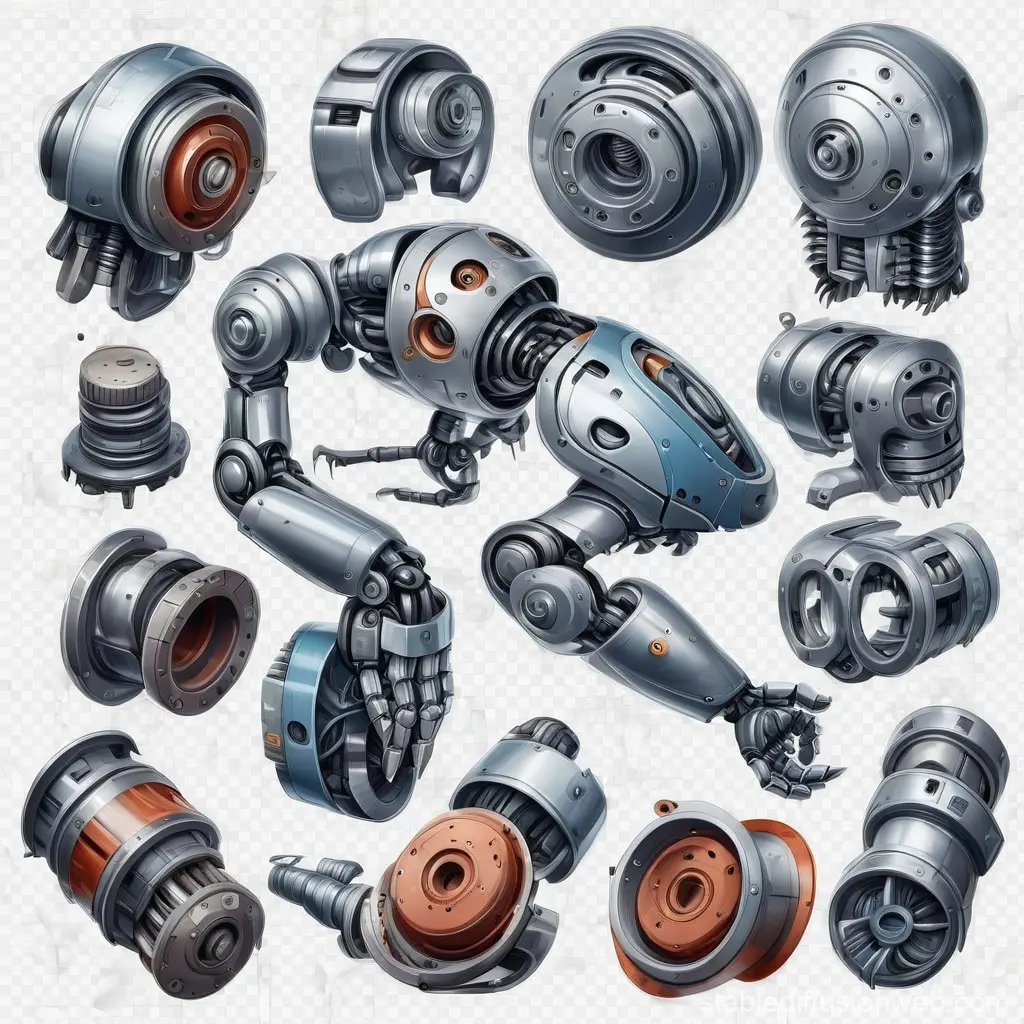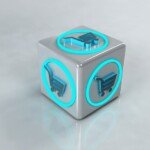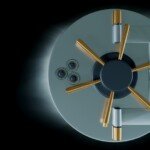That heart-heavy moment: Your CNC alarm sounded. Comprehensive troubleshooting guide to minimize downtime
In a high-risk world of precise CNC machining, the rhythmic hum of spindles and servo motors is the sound of productivity. So when this harmony is broken by the harsh beeping and flickering red light of the CNC control alarm, it feels like the floor has fallen. Downtime is not only inconvenient; it is expensive. The impact schedule, cost and competitiveness are lost every minute. Understand CNC Alerts – those password codes designed to protect your valuable machines – for any store that strives to improve efficiency and reliability, especially when operating complex five-axis equipment.
At Greatlight, we live and breathe high-precision five-axis machining every day, and we know these alerts very well. We also know the importance of addressing them quickly and correctly. This guide is more than just a list of codes; Why Behind Alerts and Strategy how To get back on track, please draw on years of complex machining challenges.
Why is it not negotiable to understand alerts
CNC machines are complex miracles of engineering, integrated mechanics, electronics, hydraulics, pneumatics and complex software. Alarms act as the nervous system of the machine, signal deviating from normal operation, potential damage or safety hazards. Ignoring or misdiagnosing them can cause:
- Disastrous Damage: An ignored servo overload alarm can mean broken tools, damaged spindles or even deformed machine ways. Ignore the thermal growth alarm during deep cavity processing? This is the secret to scrap parts and intolerant work.
- Upgrade issues: The seemingly smaller hydraulic alarm may be a faulty pump seal. Ignore it and then you may have complete pump failure, coolant contamination and extended downtime.
- Security risks: Safety interlock alarms (such as open doors or light curtain triggers) are absolute. There is a serious risk of bypassing or misdiagnosing these voters.
- Increase waste rate: Heat-induced positioning errors or unexplained vibration alarms are directly converted into parts that failed to check.
Essentially, the alarm of the machine shouting, "Hey! Before that, things to note become worse!"
Decryption code: Common CNC alert categories and root causes
Although alarm codes vary widely by manufacturers (Fanuc, Siemens, Heidenhain, Mitsubishi, Haas, etc.), they usually fall into a broad category. Understand the possibilities that this category points you to possible systems:
-
Axis drive and servo alarms (e.g. 414, 436, 437 -Fanuc; 25050, 25201 -Siemens):
- overload: Excessive cutting force, mechanical bonding, damaged servo motor/driver, loose coupling, incorrect servo adjustment.
- Excessive error: Position lag exceeds tolerance. Causes include loose elasticity, high friction, damaged road cover, weak servo or programs that exceed machine rapids.
- overheat: The motor is cooling faulty, the ventilation hole is blocked, the ambient temperature is too high, and the duty cycle is too large.
- Power or feedback error: Encoder cable issues (damage, noise), faulty encoder/parser (absolute battery failure on system!), power instability. Critical Insights: On 5-axis machines, cables with rotating shafts or umbilical cord management faults are frequently responsible for the culprit.
-
Spindle alarm (e.g. 749, 1000, 749 -Fanuc; 26000, 28000 -Siemens):
- Speed deviation: The spindle cannot reach the command speed. Check tool engagement (too heavy), dull tools, material difficulty, incorrect gears, weak spindle drives.
- Overload/overcurrent: Too aggressively cutting mechanical jam, tool holder taper contamination, spindle bearing/rotor failure.
- overheat: Coolant flows insufficiently to the spindle nose/bearing, cooling fan fails, environmental problems, long height twist cycle.
- Direction/loop error: Spindle encoder, sensor gap, belt sliding (if applicable), drive issues. It is crucial for rigid strikes and ATC operations. 5-axis correlation: Deep cavity machining can limit coolant flow to spindles – closely monitor thermal alarms.
-
Lubricating and hydraulic alarms: (e.g., low pressure, low level)
- Low voltage: Pump failure, clogged filter, pressure switch failure, major leakage of wire/cylinder (e.g., balance, clamping).
- Low level: The reservoir is empty, the horizontal sensor is faulty, and the leakage is leaked. Important: On high-precision VMCs or machines with hydraulic balance, low pressure can cause shaft drift or positioning instability period Processing.
-
Coolant and pneumatic alarms: (For example, low coolant pressure, low air pressure)
- Coolant: Pump failure, filter/nozzle blockage, insufficient concentrated mixture, affect flow, leakage.
- pneumatic: Air pressure drops in general stores, regulator failure, solenoid valve failure, leakage. For tool changers (ATCs), fixtures and some shaft brakes are crucial.
-
Program/operation alerts (e.g. PSXXXX syntax error, APC alert):
- Syntax/MCODE Error: In G code, M-codes not supported, typos in format problems – common when transferring programs.
- Travel restrictions exceed (+soft limit): Program commands go beyond the boundaries of the physical machine or defined software.
- Reference Position Loss (APC Alert-Fanuc): Encoder battery failure (common!), the machine hits position when the power is turned off, the encoder failure. Machine Zero needs to be carefully re-established! Deep insights: On a complex 5-axis setup, the appropriate homing order after APC is lost is essential to avoid subsequent motion mismatch errors.
- Safety and interlock alarms (e.g., emergency stop, door opening, shaft interlock):
- E-Stop activation: Usually it is intentional or safe to press a physical button.
- Door/Defender opens: The safety switch indicates the fence that is opened.
- Axis interlocking: Conditions to prevent shaft movement (e.g., tail rod not clamped). Never bypass security alerts without a thorough, documented risk assessment!
Great approach: Structured troubleshooting methods
Panic did not fix the machine. Here is a systematic approach honed through decades of experience in providing precise parts under pressing deadlines:
-
Precise documentation: Pay attention to the exact alert number and message. Record date/time, current operation (tool, program line #), any accompanying symptoms (abnormal sound, odor, smoke, wrong axis position). Pay attention to the machine status (spindle speed, feed rate, shaft position). This historical data is priceless.
-
Consultation Manual: Yes, really. Specific alert definitions and manufacturer’s first response steps are in the machine manual. This is the main source of your explanation "Alarm 438" relatively "Alarm 439."
-
Power cycle (caution): Typically, transient glitches (signal noise, power spikes) clear and restart. However: if the alarm is servo or spindle overload, do no Restart now. First study potential binding, damaged tool or mechanical problems. If it is a safe interlock, no way Power cycle until the safety hazard is verified.
-
Isolation system: Based on alert categories, focus:
- Servo/axis: Visual check whether to check jam, binding, damaged coupling/cable (especially rotary shaft loom), covering obstacles. Listen to unusual sounds. Manually try to rotate the shaft servo motor (if possible, follow the procedure).
- Spindle: Check tool fixtures, signs of excessive vibration (tool imbalance?), coolant flow on the spindle nose, spindle fan running. Try running at low RPM free space.
- Hydraulic: Check reservoir levels, pressure gauge, listen to pump air fluid, check line/viscosity, look for leaks.
- Coolant: Check reservoir level, pump operation, filter blockage, nozzle aiming/blocking.
- pneumatic: Check the store’s air pressure, adjuster settings, listen to leaks, and test the solenoid function.
-
simplify: If possible, copy the alert under simple conditions. Can you cause axle overload by moving slowly in jogging mode? Does the spindle alarm sound an alarm without tools at low rpm? Does it happen only in a specific program part?
-
Check for obvious (they are often missed):
- Dirty contacts for key interlocking (ATC door, security personnel switch).
- Trip-over circuit breaker on the cabinet.
- Blow fuse (sometimes visual inspection; see the location manual).
- The emergency stop button is released? Are all security chains closed?
-
Advanced inspection (careful handling): Qualified personnel only
- Measure the DC bus voltage under the driver.
- Check the motor windings using a multimeter (requires disconnection).
- Range measurements on encoder signals.
- Actively monitor servo load meter period Problematic action.
- Backup parameters forward Any significant changes.
- Learn about your limits and call a professional: For complex drive issues, suspicious encoder failures, parameter damage or deep mechanical issues within spindle or ball assembly, involve machine builders or certified experts (such as Greatlight’s advanced maintenance team) Fastest A way to reliable resolution. They have dedicated diagnostic tools, in-depth OEM knowledge and spare parts access to your store may be lacking.
Prevention: The best form of troubleshooting
Avoiding alerts is much better than diagnosing them:
- Strict PM schedule: Follow the manufacturer’s preventive maintenance plan religiously: lubrication, hydraulic/coolant changes, filter replacement, battery swap (encoder! parameters!), cleaning, belt tension check. document everything.
- Operator training: Ensure that the operator understands basic machine functions, the meaning of alarms, and understands instant response protocols (including shutdown security) forward An alarm occurred.
- Environmental Control: Maintain a steady store temperature as much as possible. Actively manage coolant concentration and cleanliness to prevent corrosion, biological growth and alterations in the conductivity of the sensor. Effectively use dust/chip extraction.
- Machine calibration: Regular laser calibration (linear/axis) and cone inspection (circular/contour) capture accuracy and rebound problems before causing scrap or shocking positioning errors. Essential for 5-axis accuracy.
- Program Verification: Leverage simulation software and perform a proven dry run (with reduced feed/speed) for complex or new 5-axis programs.
- Save spare parts: Strategically stock key consumables – encoder batteries, critical fuses, specific filters. It beat the waiting days for delivery.
Conclusion: Mastering alarms is mastering production
CNC alarms are not enemies; they are important protectors. By understanding their language, implementing structured, calming approaches to troubleshooting, and investing relentlessly in preventive maintenance and operator knowledge, you can transform alert events from nightmares to manageable events. The goal is not only to get the machine running again, but also to understand the root cause and prevent recurrence.
For complex five-axis machining, complexity is multiplied by potential failure points, and this disciplinary method is not transmitted. Precision parts with tight tolerances require operation in peak states. At Greatlight, our commitment to advanced five-axis technology is only our dedication to perfectly maintaining these precise instruments. By taking alert management as a core competitiveness, manufacturers can maximize uptime, protect valuable equipment, reduce waste, and ultimately provide the high-quality, reliable processing services customers need. Control alarms and control production floors.
Frequently Asked Questions about CNC Alerts (FAQs)
-
Q: An alarm pops up and I power the loop and it disappears. Should I ignore it?
- Year! While transient glitches may be the cause, the power bike without investigation covers the problem. Carefully record alarms. Monitor the machine closely during the next few runs and view past instances. Relapse marks a fundamental issue that needs attention.
-
Q: What are the most common alarms you see related to positioning issues after the machine power supply?
- A: Loss of reference position (APC Alarm – FANUC or equivalent) is caused by a faulty or nearly exhausted encoder backup battery. This is very common. Replacing these batteries as planned (usually annually) is crucial for preventive maintenance. Re-establish the reference position correct It is crucial after a battery failure.
-
Q: Overload/alarm warning during weight reduction can be ignored "promote" The actual damage machine is permanently damaged?
- A: Absolutely. Ignoring overloads can cause serious damage such as peeled strum nuts, damaged servo motor windings, failed spindle bearings and deformed machine components. It greatly shortens component life and leads to expensive repairs. Respect the safety of overload of the machine.
-
Q: How often should I clean the filter (hydraulic, coolant, air)? Is there a better metric than a calendar?
- one: Although the manufacturer’s timeline is the starting point, the environment determines the reality. Monitoring Pressure Gauge – A steady drop indicates blockage. Check the filter regularly. Carry out coolant concentration and contamination inspection. High-parameter environments or rough operations require more frequent cleaning. Make it part of your daily/weekly check.
-
Q: My coolant pump is running, but I get a low pressure alarm. What’s the problem?
- one: Common culprits are:
- Severely blocked filter/filter.
- partially blocked line or nozzle downstream.
- Cracked/leaked pump blades or housing reduce flow.
- Poor pressure sensor/switch (less common, but possible).
- The viscosity of the coolant is too high due to excessive concentration or contamination slows down the flow.
- one: Common culprits are:
- Q: After a slight crash, the machine powered the house and the house was OK, but now, when the servo overload alarm is triggered to the crash area. What to give?
- one: This strongly recommends mechanical damage cause The plane crash. Potential reasons include:
- Bent lead bolts or ball nuts.
- Distorted linear guide/ways overwrite the interference.
- Damaged servo motor coupling.
- Missing alignment forces excessive friction. A thorough mechanical inspection must be performed before running the machine. Force it to have a catastrophic failure.
- one: This strongly recommends mechanical damage cause The plane crash. Potential reasons include:
Focusing on accuracy requires mastering uptime. Leverage this knowledge to fine-tune your process and remember: GRESTHERMALE is your dedicated five-axis partner equipped with advanced technology and deep expertise to browse the complexity of demanding metal parts manufacturing to ensure your projects meet the highest standards of accuracy and quality.


















